Sicilia En Primeur 2025 Celebrates Wine Culture As A Guardian of Civilization, Standing Strong In The Face of Global Challenges.
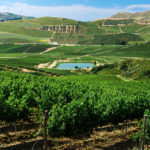
The Sicilian wine community celebrated Sicilia En Primeur this year from May 6th to 10th in the baroque splendor of Modica in southeastern Sicily. One hundred international wine journalists and 57 wineries came together to experience over 300 labels for tasting, four specialized talks, and eleven wine tours. For 21 years, Sicilia En Primeur has been celebrating the evolution of a diverse wine region on the Mediterranean’s largest island. Its history, culture, traditions, and gastronomy are as rich as they are diverse.
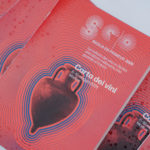
Assovini Sicilia was founded 26 years ago by Diego Planeta, Lucio Tasca d’Almerita, and Giacomo Rallo, who launched an association to lead the way to a Sicilian wine renaissance and has since grown in membership and international success due to their visionary and collaborative approach. This year’s event theme was “The Culture of Wine in Sicily: A Thousand-Year Story that Looks to the Future” and focused on wine’s cultural value, responsible consumption, wine tourism, and sustainability. Mariangela Cambria, President of Assovini Sicilia, emphasized how the association promotes wine as a product of civilization, knowledge, beauty, and tradition, positioning Sicily as defender of wine culture against restrictive global dynamics. The association’s success is based on innovation and adaptability, integrating new generations into company management roles while focusing on sustainability and cultural preservation. In addition to the conference, Sicilia En Primeur organized eleven wine press tours exploring Sicily’s diverse terroirs from Etna’s volcanic slopes to Pantelleria’s sun-drenched vineyards, from Marsala’s historic cellars to emerging zones across the island. The tours revealed the extraordinary versatility of Sicily’s wine landscape and innovative approaches across different microclimates and altitudes.
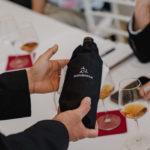
Central to Sicily’s identity remains Nero d’Avola, representing over 60% of Sicilia DOC production with remarkable +441% growth since 2017. Four distinct biotypes correlate to different macro-zones: Central-Southern Sicily produces deep-colored wines with high alcohol and soft tannins; Western Sicily yields lighter, consistent wines; Eastern Sicily delivers higher polyphenol wines with characteristic herbaceous notes reminiscent of Cabernet Franc, often described as caper nuances. Catarratto emerged as exceptional for Classic Method sparklings at high altitude, while beloved Frappato showcased remarkable versatility in rosés, bubbles, and blends with Nero d’Avola. Sicily represents international significance with over 8,000 vine-growers, 530 bottlers, 24,600 hectares, 86 million bottles annually, and Europe’s largest organic vineyard area with 26,000 hectares. DOC Sicily, established in 2011, serves as a powerful ambassador for the island’s diverse heritage. This year’s collaboration with La Sicilia di Ulisse distinguished the event, featuring Michelin-starred chefs in the gala dinner celebrating Sicily’s 2025 European Gastronomic Region designation. This collective unites Sicilian distinction across hospitality, culinary arts, and winemaking industries. Strengthened collaborations with Enoteca Regionale Sud-Est and ATS Strade del Vino Cerasuolo di Vittoria delivered concentrated regional expertise on southeastern territories.
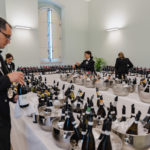
The comprehensive technical tasting showcased 300 wines from 57 producers, demonstrating Sicily’s evolution from bulk production to premium, terroir-driven wines competing internationally. Four specialized talks addressed contemporary challenges, including communication strategies, neuromarketing, and new State labeling initiatives. Sicily stands as a territory achieving worldwide acclaim through substantial environmental stewardship commitments. The 2025 Sicilia En Primeur positioned itself as a cultural declaration safeguarding wine’s civilizational importance while championing innovation, ecological responsibility, and mindful consumption, demonstrating that Sicily’s viticultural community spearheads international discourse regarding wine culture’s evolution.
Sicily’s Wine Renaissance: Tourism Meets Timeless Tradition
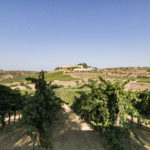
In addition to the broad array of high-quality wines, Sicily offers stunning scenery and a unique historical and architectural heritage. Some of the best-preserved sites of antiquity are found across the island and are layered with all the cultures that came after. In less than an hour, one can visit Sicily’s largest Greek theater in Taormina and wine tasting on the slopes of Mt Etna. Optionally, visit Moorish-influenced mosaics at a Norman cathedral in Palermo, then spend the afternoon exploring the best Marsala wineries. Few places offer such rich experiences with wineries so well equipped to receive visitors. Among the members of Assovini Sicilia, almost all of them have a dedicated tasting room for visitors, and more than half offer experiences such as cooking classes and spa treatments, and winery tours that interact with the landscape and culture. The most popular experiences offered are sunset tastings, dinners in the vineyard, and a chance to join the grape harvest. One third of these wineries also have accommodation where wine enthusiasts can stay on the property, fully immersed in the terroir and culture of the winery.
During the Sicily En Primeur, some fantastic territories were explored on the press trips. Sveva Consonni, my collaborator, visited some great wineries and provided the following report.
Tenuta Rapitalà
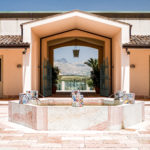
Rapitalà (Arabic for “God’s Garden”) embodies a unique cultural fusion that began in 1968 when Laurent de la Gatinais’s French father and Sicilian mother settled on the island. Their vision: “drinking Sicily from a French point of view” – marrying French winemaking expertise with indigenous Sicilian varieties. The 225-hectare estate spans diverse microclimates, with indigenous plantings dating to 1963 and international varieties introduced systematically from 1968-1985. Today, the family produces 2 million bottles annually across their Dominio Rapitalà and Horeca lines. After achieving organic certification in 2021 (following a careful transition that began in 2011), Rapitalà continues collaborating with the University of Palermo on innovative viticultural practices. Their harvest extends from early August through late October, accommodating the estate’s varied terroir and commitment to optimal ripeness.
Tasting Notes:
VIVIRI 2024 / 100% Grillo Vineyards from 300 to 600m elevation. With vines planted at different altitudes, they can decide during harvest how to manage the blend for desired results, so vinification occurs by plot. Soils are mainly clay-based but become increasingly sandy at higher elevations. Decidedly mineral, savory, lively fruit.
CASALI Alcamo DOC / 100% Catarratto Vineyards planted in the estate’s highest zones at about 600m elevation. This variety, historically linked to the Alcamo area, is difficult to vinify as it can show bitter notes. It’s appreciated and successful in France for its similarity to Chablis and Pouilly Fumé. You feel the altitude. Notes of jasmine and hydrocarbons. Interesting with aging because it develops minerality from terroir rather than vinification.
CONTE HUGUES 2025 / 100% Chardonnay Chardonnay clones from different origins. Vinification: steel and barriques. Vineyards dating to 1980. Vineyards at 450m elevation: 6/7 different plots. Blending is done partly after steel fermentation, partly when wine is already in barriques. 9/10 months on lees in barriques (about 360 barriques of different types). Some barriques may undergo malolactic, but only a minimal part. With the University of Palermo they also studied rootstocks. Aspires to compete with some Burgundy Chardonnays. Among whites, it’s their flagship, the wine most representative of their identity. It has important aging potential (after 6/7 years expresses perfect oxidation) and pairs very well with aged cheeses. Beautiful, persuasive.
ALTO REALE / 100% Nero d’Avola Garnet color with notes of violet. Cold maceration (5 degrees), 10/15 days then gradually increase temperature. The key is controlling micro-oxygenation: they use 4/5 hectoliter barrels for very slow evolution. Not many tannins or polyphenols. Balsamic, slightly bitter touch, ripe cherry, sour cherry. Never falls into overripens. Rich but gentle jam. Soft and polite tannins. Beautiful.
HUGONIS / 50% Cabernet Sauvignon / 50% Nero d’Avola Deep garnet with ruby rim. Rich but with an austere note. Well-integrated tannins. Tobacco. Harmonious marriage between the two varieties – Bordeaux and Sicily, both recognizable but well integrated. “Low-profile opulence.” Elegance comes from vineyard altitude.
GAELLE / 100% Syrah The name derives from the Breton dialect meaning “pure and generous.” Warm, predominant wild blackberry. Full-bodied and creamy. Induces salivation. Perfect with chocolate and perhaps Christmas pudding or other desserts rich in dried fruits and candied fruits.
CIELO D’ALCAMO / Alcamo white, late harvest Not produced every year. Sauvignon Blanc and Catarratto, but blend percentage varies annually. Production is about 4,000 bottles. Delicious. Great floral perfumes, amber notes.
Serra Ferdinandea
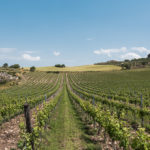
A collaboration between Planeta and French financier Oddo, Serra Ferdinandea represents Sicily’s most ambitious biodynamic experiment. Located in Menfi at 500m elevation, this 110-hectare estate occupies pristine territory untouched by agriculture for 300 years. The philosophy is radical: “The place, not the producer’s ego, is central.” Only 15 hectares are planted to vines, with 16 hectares preserved as Mediterranean forest where semi-wild livestock graze, producing compost naturally. The remaining land grows ancient grains, indigenous chickpeas, and native figs. This holistic approach yields extraordinary 10% crop vigor compared to 3.5% on conventionally farmed land. Biodynamic preparations (500, silica, iron, nettle) guide vineyard management, while grape placement follows terroir logic: Syrah on high slopes, Nero d’Avola on exposed rocky sites, Grillo and Sauvignon Blanc mid-slope for freshness. The wines bear no names—simply rosé, white, and red with vintage—letting the place speak for itself. Production: 30,000-40,000 bottles annually.
Tasting Notes:
ROSÉ 2024 / 100% Nero d’Avola Early harvest. Pressing with stems to preserve tannins and obtain crisp aromas and freshness. Pied de cuve 7 days before fermentation: 2/3 different versions to choose from to then obtain ideal fermentation conditions. Grapes must be perfect. Controlled temperature without ever exceeding low temperatures. Bottling in January/February. On the palate: mineral. Important acidity.
WHITE / 50% Sauvignon Blanc, 50% Grillo Grape infusion during fermentation. When the mass is macerating, they add 12% whole berries. Grillo only uses steel, Sauvignon Blanc uses 25 hl barrels and tonneau (never new wood). Since they use spontaneous yeasts, they use wood for micro-oxygenation.
RED 2021 / 50% Nero d’Avola, 50% Syrah For this wine it’s as if it were the first harvest. Vinification phases: “cooling room,” then selection, then gentle fermentation (all by gravity). Carbonic fermentation, then 12 days maceration. Following: 12 months in wood: large barrels for Nero d’Avola and tonneau for Syrah. Finish in cement. However, they do different experiments each year using different methods and materials. Deep but elegant palate. Intense, more austere, less fruit. Tannins are well present, still partly to be refined.
Feudo Arancio
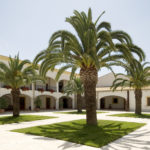
Named for the medieval orange groves that once covered this land, Feudo Arancio represents large-scale sustainability done right. Now part of the Mezzacorona Group, this 200-hectare estate produces 7 million bottles annually while maintaining organic certification since 2007. Water management showcases their environmental commitment: natural springs, two estate-fed lakes, plus Lake Arancio provide irrigation only when necessary. The 60-person team hand-manages all vineyard operations except harvest, working across diverse elevations from 120m to 300m where sandy and clay soils create distinct terroir expressions. Their altitude-driven approach produces two distinct Nero d’Avola styles: a fresh, approachable version from higher vineyards and a complex, concentrated expression from lower, clay-rich sites. Night harvesting for whites (3-9 AM) preserves aromatics, while innovative techniques include post-harvest grape drying on vineyard wires. Even their Pinot Noir, grown near shady forest cover, develops more structure than typical northern Italian versions. The estate also produces premium olive oil from 15 hectares of indigenous varieties.
Tasting Notes:
HEDONIS Riserva 2015 / 100% Nero d’Avola Different-aged vines harvested – oldest in early September, youngest in late September. Then old vine grapes go into wood, new ones into steel. Production about 8,000 bottles, but not produced every year. Notes of licorice, ripe cherry. Tannins still to be refined. Pleasant finish.
HEDONIS Riserva 2022 Nero d’Avola Wine dedicated exclusively to Horeca channel. Production of 10,000 bottles, wine shop price €45.00. French wood. Nose: licorice and cherry. More pleasant and coherent with the type compared to previous.
ECATE Passito / Grillo and Zibibbo 50% late harvest, the other 50% of grapes remains hanging on vineyard wires to dry. Not produced every year (roughly every 3). About 10,000 bottles. Sugar residue 1.2. On palate: apricot, jasmine, almond, candied oranges. In my opinion the best of their wines.
Mandrarossa
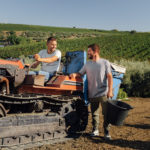
Part of the impressive Settesoli cooperative network (6,000 hectares, 20 million bottles), Mandrarossa emerged in 1999 as the premium expression of this collaborative model, producing 1 million bottles annually from the “Terre dei Sicani” district. Their scientific approach centers on micro-vinification and the principle of “right grapes on ideal soils,” utilizing five experimental plots across different soil types. This research-driven philosophy, supported by partnerships with the University of Milan, helped establish them as early adopters of international varieties alongside traditional Sicilian ones. The 11-kilometer territory strip remains completely uncontaminated, supporting both VIVA certification for economic/social sustainability and low environmental impact credentials. Vineyard management combines modern techniques (90% spur-pruned cordon) with traditional methods (10% bush vines), while irrigation covers only half the plantings. Night harvesting for whites runs from midnight to 5 AM, ensuring optimal fruit quality across their diverse portfolio spanning both Menfi and Etna appellations.
Tasting Notes:
URRA DI MARE Menfi DOC/100% Sauvignon Blanc (the name means: small river flowing into the sea) This is a new project that will develop further next year. First production year. Only steel. Very mineral, savory, crisp. Citrus. Interesting.
BERTOLINO SOPRANO (district name) 100% Grillo Superiore Vineyard near a beach with white stones. 100% calcareous soil. Single vineyard. Very good but less significant on the nose than previous. The label depicts Santo Cusumano riding through the vineyards. Steel, cement and wood. Mineral notes, almond.
SENTIERO DELLE GERLE / 100% Carricante 600m elevation. Only steel. You feel the volcano. Stones, hydrocarbons on nose. Present acidity, crisp citrus. Very interesting.
URRA DI MARE / 2024 Etna Rosso / Nerello Mascalese 700m elevation. Harvest at the end of October. 8 months in French oak (50 hl.), second passage. Ripe cherry and raspberries.
TERRE DEL SOMMACCO / 2021 Nero d’Avola 450m elevation. Calcareous soils. Both cement and large wood. Unconventional. Perhaps interesting but a bit closed.
CARTAGO / 2021 Nero d’Avola 200m elevation. 50% calcareous soil. From 3 different vineyards totaling 15 hectares. Different territory types, different training methods, different vinification methods. 1 year in barriques. Full, rich, balsamic. Beautiful. Firm tannins and good freshness.
Feudi del Piscotto
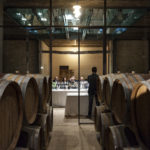
Established in 2002, Feudi del Pisciotto is strategically located in southeastern Sicily, between the Roman Villa of Piazza Armerina and Caltagirone, a town famous for its ceramics, and just 5 kilometers from the Mediterranean Sea. Its 44 hectares of vineyards, situated around 250 meters above sea level, benefit from a unique terroir and climate. The altitude, combined with the nearby coastline, creates moderating influences ideal for producing premium wines. The estate meticulously cultivates its vineyards, treating them with the care of a botanical garden. This dedication by their viticulturists contributes significantly to the high quality of their wines. Annually, Feudi del Pisciotto produces up to 400,000 bottles. Their plantings include indigenous Sicilian red grapes such as Nero d’Avola and Frappato, along with international varieties like Merlot, Cabernet, and Pinot Nero. They also feature less common Sicilian grapes like Semillon and Gewürztraminer, used to produce an exceptional Passito dessert wine. These international varieties grown in Sicily exemplify the belief of renowned oenologist Giacomo Tachis that Sicily has the potential to cultivate almost any grape variety successfully, provided expert knowledge and careful viticultural practices are applied.
Cantina Gulfi
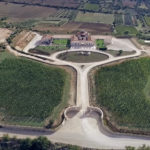
Gulfi embodies the true essence of Sicily, crafting distinct wines deeply rooted in their specific origins. Inspired by the mythical love of Eros and Psyche, Gulfi passionately translates Sicily’s beauty into wines of pure pleasure. Vito Catania carries on his family’s three-generation winemaking heritage with a profound love for wine and his homeland. Since 1996, in Chiaramonte Gulfi within Ragusa’s Monti Iblei, he has expertly blended innovation with ancestral knowledge, focusing on meticulous massal selection and vine cultivation. Gulfi’s vineyards extend from the Cerasuolo di Vittoria DOCG in Monti Iblei to the Eloro DOC in Pachino, yielding four remarkable Nero d’Avola wines, each defined by its unique terroir. Their portfolio culminates on Etna’s northern slopes in Randazzo, where ancient Nerello Mascalese and Nerello Cappuccio vines flourish at high altitudes. Gulfi’s philosophy respects nature through traditional, unirrigated bush-vine cultivation, honoring ancestral methods and natural cycles. Their commitment to organic farming stems from a deep respect for both the land and the consumer, celebrating the manual harvest as a time-honored ritual.